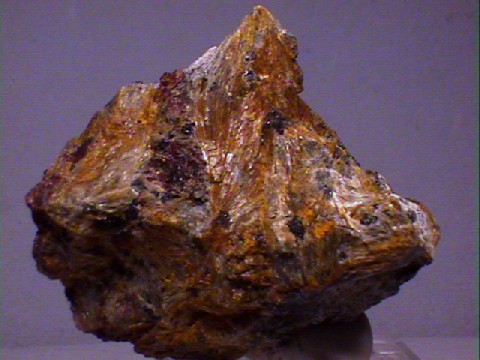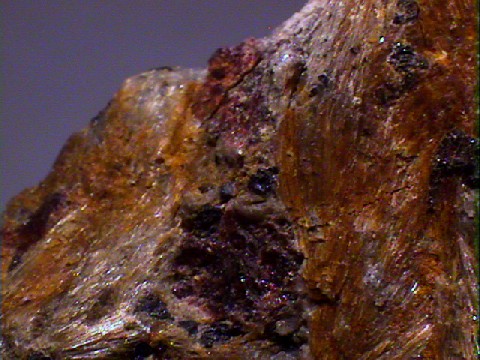 The Mineral CUMMINGTONITE
The Mineral CUMMINGTONITE
- Chemistry: (Mg, Fe)7Si8O22(OH)2 , Magnesium Iron Silicate Hydroxide.
- Class: Silicates
- Subclass: Inosilicates
- Group: Amphibole
- Uses: Are limited to some asbestos uses and as mineral specimens.
Specimens
Cummingtonite is the name of a series as well as the name of a mineral.
The mineral cummingtonite, is basically the middle member of the Cummingtonite
Series, which include the minerals
Cummingtonite shares its formula with another mineral called anthophyllite. Cummingtonite and anthophyllite are polymorphs, a situation where two minerals share the same chemistry but have different structures (poly=many, morphs=shapes). Diamond and graphite are the most famous examples of polymorphism. In the case of anthophyllite and cummingtonite, anthophyllite is orthorhombic and cummingtonite is monoclinic. The two minerals can have similar distinctive brown colors and are hard to differentiate from each other, although cummingtonite is typically darker and slightly denser. Despite their distinctive brown color, the two are often indistinguishable from other amphiboles without optical or X-ray tests.
Cummingtonite is a common component of some regional metamorphic rocks. If more intense metamorphism were to occur, the minerals hypersthene, enstatite or olivine are produced at the expense of cummingtonite. Retrograde metamorphism can conversely restore cummingtonite as well as other iron-magnesium amphiboles.
One form of cummingtonite (a variety called "amosite") is asbestos-form and can be used as asbestos. Asbestos has many industrial uses despite some health risks and is made from different minerals, all with a fibrous habit. Serpentine and tremolite asbestos are considered the better varieties due to their greater flexibility and tensile strength, but cummingtonite asbestos has its uses and is being mined for this reason in South Africa.
PHYSICAL CHARACTERISTICS:
- Color is a dark grayish or greenish-brown and dark green.
- Luster is silky to vitreous.
- Transparency: Crystals are translucent to opaque.
- Crystal System is monoclinic; 2/m.
- Crystal Habits include fibrous, lamellar and radiating masses. Twinning is common and is either simple or lamellar.
- Cleavage: is good in two directions at 56 and 124 degree angles.
- Fracture is splintery.
- Hardness is 5 - 6.
- Specific Gravity is approximately 3.1 - 3.6 (average to slightly above average).
- Streak is white.
- Other Characteristics: Non-pleochroic.
- Associated Minerals are hematite, hornblende, actinolite and anthophyllite.
- Notable Occurrences include Cummington (hence the name), Hampshire County, Massachusetts; Homestake gold mine, Lawrence County, South Dakota and La Paz County, Arizona, USA; Scotland; South Africa and Sweden.
- Best Field Indicators are crystal habit, fracture, cleavage, color, density and hardness.



